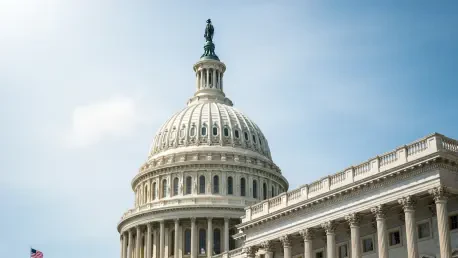Every year, the IRS implements inflation-related modifications to more than 60 tax provisions to keep income tax brackets, deductions, and other elements in line with the shifts in the cost of living. For the tax year 2025, which pertains to returns submitted in 2026, these modifications resulted in an average increase of approximately 2.8%.
In July 2025, a comprehensive legislative initiative, known as the “One Big Beautiful Bill Act,” was enacted, introducing several new tax regulations that took effect immediately. Most significantly, this legislation made certain aspects of the 2017 Tax Cuts and Jobs Act (TCJA) that were initially scheduled to expire at the end of 2025 permanent.
The changes are not just a concern for the finance department. They are tremors that reshape capital allocation, technology roadmaps, and international operations. For leadership, treating this as a simple check-the-box exercise is a critical error. These changes may impact how you plan your taxes in the future. Unless otherwise noted, the new tax rules will take effect in the 2025 tax year.
Key Provisions Demanding Business Action
While the legislation contains hundreds of pages, a few core areas demand immediate executive attention due to their direct impact on business models and financial health.
Permanent Incentives And Capital Investment
The new law solidifies several key business provisions, providing much-needed certainty for long-range planning. Most notably, it permanently extends 100% bonus depreciation for qualified assets and maintains the immediate deductibility of domestic research and development expenses.
For CFOs, this stability allows for more confident financial modeling and capital expenditure planning. For COOs, it provides a direct incentive to invest in automation, new machinery, and technology infrastructure that boosts productivity.
Navigating Temporary Relief Measures
The act also introduces several temporary tax relief measures set to expire in the coming years. These include new deductions for specific labor costs and targeted relief for certain capital loan interest payments. While beneficial, their temporary nature introduces complexity.
Businesses must carefully model the impact of these provisions to maximize short-term cash flow without creating long-term structural dependencies. The strategic question is not just how to claim the deduction, but how to use the resulting savings. Should the capital be reinvested, used to pay down debt, or returned to shareholders? A clear plan is essential before these provisions sunset.
The New Clean Energy Landscape
The clean energy sector faces a significant realignment. The legislation overhauls existing incentives, expanding some credits for emerging technologies while phasing out others for more established ones. This strategic pivot requires businesses in the ecosystem to immediately reassess their project pipelines and investment theses.
Companies heavily reliant on the curtailed credits must find new paths to profitability, potentially through operational efficiencies or technological innovation. Conversely, organizations aligned with the new incentives may find themselves with a powerful competitive advantage. Supply chain and site selection decisions made today will have long-term consequences under this new regulatory framework.
Recalibrating International Tax Strategies
For multinational corporations, the act refines key international tax provisions like the rules for Global Intangible Low-Taxed Income and Foreign-Derived Intangible Income. While some changes are taxpayer-friendly, they are accompanied by adjustments that necessitate immediate and sophisticated financial modeling.
These are not minor tweaks. Changes to international tax rules can alter the calculus for where a company locates assets, intellectual property, and even personnel. A multinational enterprise might find that its current operational footprint is no longer tax-efficient, prompting a strategic review of its global structure to optimize its effective tax rate and mitigate compliance risk.
TCJA at the center
The bill aims to extend provisions from the 2017 Tax Cuts and Jobs Act set to expire soon. This includes individual tax benefits, such as lower marginal income tax rates, an increased standard deduction, a higher child tax credit, and a $10,000 limitation on State and Local Tax deductions. Many of these benefits were scheduled to vanish at year’s end without Congressional action.
For businesses, recent changes have included the loss of immediate deductions for research and development expenses, stricter calculations for net interest expense deductions, and a decrease in bonus depreciation. If Congress does not intervene, tax rates on the Base Erosion and Anti-Abuse Tax will rise by 2026, and deductions for Global Intangible Low Tax Income and Foreign Derived Intangible Income will decline.
The law also fulfills several of President Trump’s campaign promises, including reducing tax burdens on tipped wages, increasing the standard deduction for seniors, and offering a new deduction for loans on domestically produced cars.
Revenue-generating measures include permanent extensions of certain expiring Tax Cuts and Jobs Act provisions, limitations on State and Local Tax deductions, an excise tax on specific remittances, and increased taxes on university endowment investment income.
Fueling Domestic Investment And Innovation
The legislation’s core objective is to stimulate private sector investment within the United States. It achieves this through several powerful, permanent provisions that directly impact a company’s capital allocation strategy.
Full Expensing For R&D And Equipment
The law permanently establishes two critical incentives. First, it allows for the immediate deduction of all domestic research and development costs, eliminating the previous requirement to amortize these expenses over a five-year period. Second, it reinstates 100% bonus depreciation, allowing businesses to immediately write off the full cost of new equipment and other qualified property.
These are not just accounting changes; they are direct financial levers. The immediate research and development deduction lowers the effective cost of innovation, encouraging companies to launch more ambitious projects and shorten development cycles. For manufacturers, tech firms, and life sciences companies, this provides a significant tailwind. Similarly, 100% bonus depreciation accelerates the ROI on capital expenditures, making it easier to justify investments in automation, technology upgrades, and infrastructure modernization.
Mini-Case Study for Seizing The Depreciation Advantage
Consider a national logistics company operating with an aging fleet of delivery vehicles. Under the new law, it invests $10 million in new, more efficient trucks. By applying 100% bonus depreciation, the company can deduct the entire $10 million from its taxable income in the year of purchase. This generates an immediate cash tax savings of over $2 million, which can be reinvested into route optimization software or employee training programs, turning a capital expense into a catalyst for broader operational improvements.
Strengthening Small And Mid-Sized Enterprises
The act includes several provisions specifically designed to improve cash flow and reduce the tax burden for non-corporate and smaller businesses, acknowledging their critical role in the economy.
Enhanced Deductions For Business Income
The legislation makes the 20% Qualified Business Income deduction permanent. This provision allows owners of pass-through entities, such as S corporations, partnerships, and sole proprietorships, to deduct up to 20% of their business income. This deduction lowers their effective tax rate, helping to free up capital for reinvestment, hiring, or expansion. The law also expands the income phase-out ranges, making this valuable deduction accessible to a wider pool of entrepreneurs.
Increased Expensing Limits For Business Assets
For smaller businesses making capital investments, the Section 179 expensing limit has been increased to $2.5 million, with the phase-out threshold rising to $4 million. This allows a small manufacturing shop or a growing service firm to immediately deduct the full cost of significant asset purchases, such as machinery or computer systems, rather than depreciating them over many years. This simplifies tax preparation and directly improves near-term cash flow, a critical factor for growth-oriented smaller companies.
Targeted Incentives For Key Industries
Beyond broad-based relief, the law offers specific, targeted incentives designed to promote growth in sectors deemed crucial to national and economic interests.
Advanced Manufacturing: The Advanced Manufacturing Investment Credit is increased from 25% to 35%, providing a powerful incentive for building or expanding facilities involved in semiconductor production and other strategic technologies.
Low-Income Housing: To address housing shortages, the act enhances the Low-Income Housing Tax Credit. It permanently increases the state housing credit ceiling and reduces the tax-exempt bond financing threshold, making it more financially viable for developers to build affordable housing projects.
Clean Energy Transition: The law updates qualifying income sources for publicly traded partnerships to include revenue from hydrogen storage, carbon capture, advanced nuclear, hydropower, and geothermal energy. This change is designed to channel private investment toward a diverse portfolio of next-generation energy technologies.
Creative Industries: The act expands expensing rules to cover qualified sound recording productions. This allows record labels and artists to immediately deduct up to $150,000 in production costs, aligning the tax treatment of music with that of film and television productions.
These industry-specific provisions signal clear policy priorities. Businesses operating in these sectors must reassess their strategic plans to fully capitalize on these new or enhanced incentives.
Final Thoughts
As businesses adjust to the changes brought about by the One Big Beautiful Bill Act, the landscape for long-term tax planning, capital investment, and international strategy is undergoing significant shifts. The permanent incentives for capital expenditures and research and development provide companies with much-needed stability and clarity for future planning. However, temporary measures require a nuanced approach to ensure short-term benefits don’t compromise long-term sustainability.
The realignment of the clean energy sector signals an urgent need for businesses in related industries to reassess their strategies and capitalize on new opportunities. Meanwhile, the refined international tax rules necessitate a reevaluation of global operations for multinational corporations to optimize their tax structures.
Ultimately, the key to navigating these tax changes lies in a proactive approach: modeling future impacts, creating clear capital allocation plans, and staying ahead of evolving regulations. By doing so, businesses can unlock new growth opportunities, drive innovation, and strengthen their financial position in a dynamic market.









